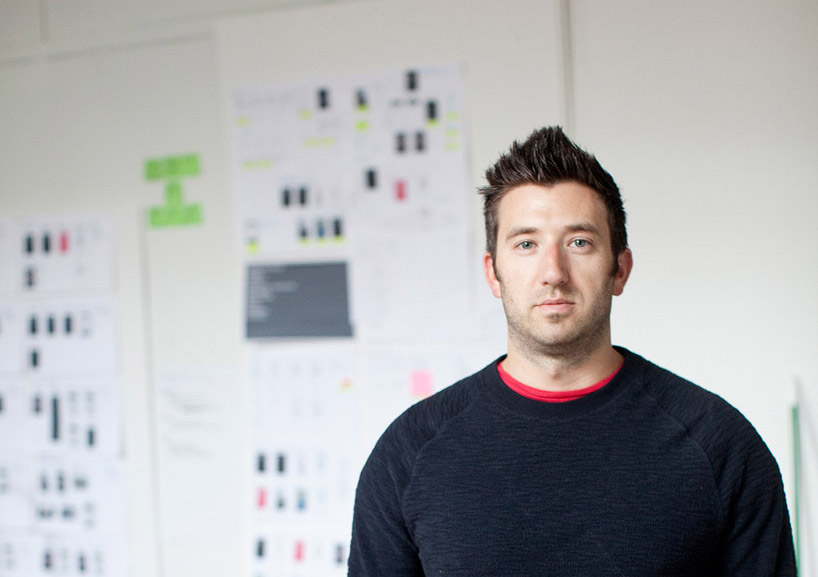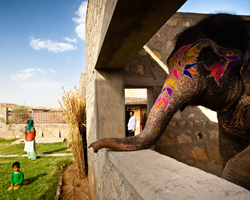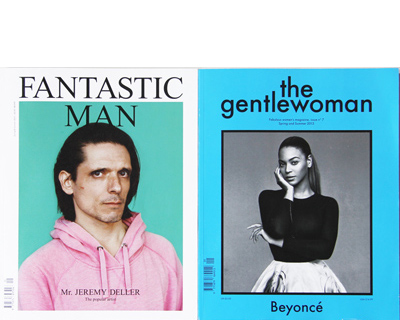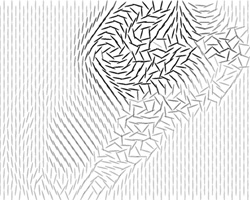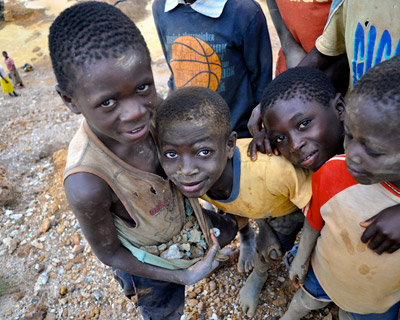mike kruzeniski
the social significance of the digital world is undeniable, and designers also play a critical role here. the design and use of information and communication technologies – as well as the information itself – has a huge impact on our lives and the way society and businesses are shaped.
understanding the full potentials of the digital realm and consequently using them in new, smart ways to improve people’s lives or businesses’ performance is a designer’s task. for instance, the fact that 75 percent of world population now possesses a mobile phone has huge consequences for the way information is spread and decisions are made. designers are challenged to use facts like these for the better.
WHAT DESIGN CAN DO, the international event on the impact of design
designboom interviewed mike kruzeniski, twitter design lead, who will present at the ‘what design can do‘ conference in amsterdam.the two-day program (may 16-17, 2013) is divided into different sections, each focusing on a specific theme. speakers in these sections will be from all kinds of backgrounds and working in different disciplines as we are firm believers in cross breeding. this year’s topics are: publishing, education, research, food, branding and the screen.
could you tell us about your work at twitter? which part of the design process do you find your self most invested in?
I’m a design lead at twitter. our design team works closely with our engineering and product management teams to build the core features and experiences on twitter — across mobile and web. for example, the home timeline, search, your profile, or how you compose a tweet.
when working as a designer in house, you really need to get invested in the entire process of designing products. when I got started as a designer, I was most interested in the early stages, looking for the concept. as much as I love big ambitious ideas, the detail and execution is what really defines great products. so I’m very interested in the process of how-to-get-great-things-made. this is more than just thinking about design details, but how you work as a large team, and how you work with engineers, product managers, and your company’s leadership. in the last few years I’ve also become very interested in the building of teams, and how to grow a culture where great design work can take place. we’ve been able to put together a really great studio at twitter.
what’s your daily routine like?
it varies from day to day, but it’s usually a mix of spending time with the people on my team to talk about their work and challenges they might be facing, reviewing designs with the team, design workshops, product meetings with engineers and product managers, connecting people that I think would benefit from collaborating, and as much as I can, sketching ideas for what I think our team should work on next.
how did you get involved in working with mobile products and services?
I got started in design by studying industrial design in vancouver. I moved away from home for school, and suddenly communication became very important to me. I spent a lot of time thinking about it, and ended up designing a lot of phones and related communication products. since software played such an important role in these products, I decided to go study interaction design. I moved even further away from home to a school in sweden, so I supposed that need for communication continued to be theme for me. after school I worked for nokia, with a advanced design team that was dedicated to exploring near future mobile and communication concepts. I spent four and a half years working on mobile at microsoft, and am now at twitter, so I’ve spent most of my career on mobile products and services.in the beginning my interests in mobile communication stemmed from a personal need, and today it continues to feel like a meaningful thing to work on, to help others with similar needs to connect.
what are some of the current social issues which are informing the creative decisions you are making at twitter?
twitter is used for everything from celebrity news, to keeping in touch with friends, to organizing political movements. the nature of the platform allows it to be used in many different ways. we try our best to understand what the product means to all the people that use it, so we can continue to make it as personally relevant as we can. for me personally, significant world news events represent important moments to pay especially close attention to how twitter can help people connect quickly and serve as a source for news — helping them get the key information they need, when they need it.
what should we expect from twitter in the next 5 years?
as a company we’re very focused on building products that help people create, share, and discover in the simplest and most elegant ways we can imagine. what that means over the next five years, stay tuned.
what digital device(s) do you use to keep in touch and share data?
I use a few different phones (iPhone, android, windows phone), an iPad, my macbook for work and my iMac at home.
what software programs and apps are you using regularly?
twitter, gmail, chrome, reddit, iA writer, dropbox, skype, rdio, wordpress, google maps, hulu, pinterest, nike running, clear, any.do, 1password.
for design work I use photoshop, illustrator, keynote, coda, and our studio’s large format plotter.
how often do you tweet?
do you think the future of social media is heading in the right direction?
social media tends to head in the direction that people use it.
what are your thoughts on augmented reality? will we see twitter integration?
there are a few interesting things happening in the space – most notably google glass – but the technology is still in its infancy. a lot of the things we’re seeing are very experimental, and don’t yet pay a lot of attention to the human condition. in its current forms, it’s unclear which problems augmented reality really solves (or will solve). I don’t think mainstream applications of augmenting reality will look the way that it has been visualized in science fiction.
WHAT DESIGN CAN DOon friday may 17, at WDCD 2013 we will hear more expert views of mike kruzeniski. see the speakers program here.
mike kruzeniskimike kruzeniski is a design lead at twitter in san francisco.prior to joining twitter, mike was a principal lead at microsoft in the windows phone design studio in seattle. from 2004-2007 mike was part of nokia design’s insight & innovation team in los angeles, a team that incubated mobile product concepts and strategies for nokia.
mike has a master’s degree in interaction design from the umeå institute of design in northern sweden, and a bachelor of industrial design from emily carr university in vancouver, canada.

designboom is international media partner of what can design do!
WHAT DESIGN CAN DO
the two-day event in amsterdam celebrates the power of design and its problem-solving abilities – exposing design as a catalyst of change and renewal and a way of addressing the societal questions of our time.
too often design is associated only with aesthetics, trends and luxury, but design can mean so much more. at its best, design can change, improve, renew, inspire, involve, shock, move, disrupt, help or solve. what design can do intends to demonstrate the value of design thinking as a response to the challenges of today’s world. with a lineup of international speakers from all design disciplines, what design can do will be the platform for designers to manifest the social potential of their profession. together with the audience, the speakers will discuss alternative strategies for the future. participants will be stimulated to come up with their own answers and ideas. this makes what design can do an activist conference, the outcome of which will be published in a book compiled on the spot and presented at the end of the conference. what design can do is an annual international conference for design professionals, company leaders and government officials.
what design can do is a cross-over between design disciplines – from architecture to product design, from graphic design to fashion design – as solutions for today’s challenges generally demand a multi-disciplinary approach. what design can do is initiated by designers who feel the responsibility to make their profession useful for society and want to reflect on this with fellow designers and other professionals.
PRODUCT LIBRARY
a diverse digital database that acts as a valuable guide in gaining insight and information about a product directly from the manufacturer, and serves as a rich reference point in developing a project or scheme.
